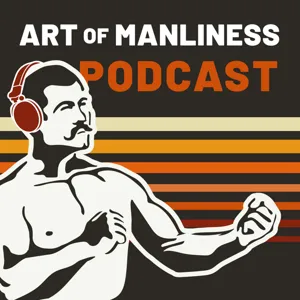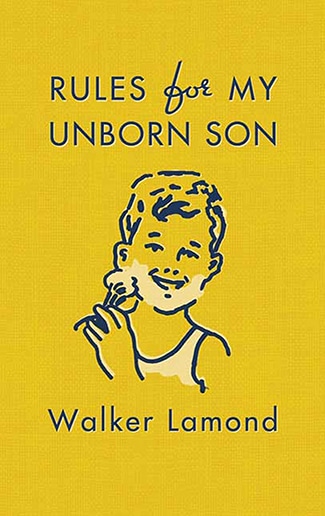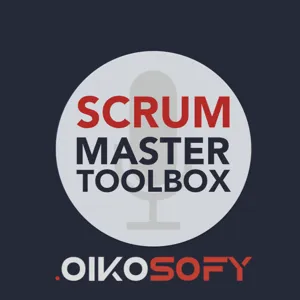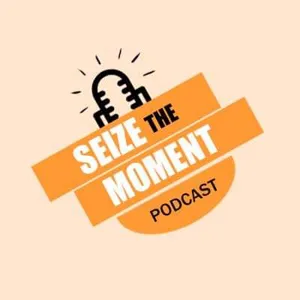Podcast Summary
The Hyperactive Hive Mind in Modern Workplaces: Counterintuitively, focusing on processes over messaging, increasing intellectual specialization, and hiring support staff can lead to increased productivity and focus in the workplace.
The constant barrage of emails and digital messages through tools like Slack and Instant Messenger have created a "hyperactive hive mind" in modern workplaces, leading to decreased productivity, focus, and well-being. Author Cal Newport argues that this issue is deeply rooted in the way we communicate and work today, and offers practical solutions, such as concentrating on processes over messaging, increasing intellectual specialization, and hiring support staff, to replace this hive mind with more effective ways of working. These changes may seem counterintuitive, as they involve more friction and less convenience, but they can ultimately lead to increased productivity and focus.
The hyperactive hive mind workflow can be detrimental to productivity: Constant digital messaging for collaboration can lead to fatigue, anxiety, and decreased focus, hindering productivity
The hyperactive hive mind workflow, which relies on unscheduled, unstructured digital messaging for collaboration and coordination, can be unsustainable and detrimental to productivity when scaled to a whole team or company. This workflow, which includes email and tools like Slack, can create a cognitive environment that makes it difficult for our brains to focus and work effectively. The constant need to check and respond to messages results in network switching, which can lead to fatigue, anxiety, and frustration. This phenomenon, known as attention residue, makes it hard for us to fully engage with the task at hand, and can ultimately hinder our ability to be productive.
The damage of constant digital communication to productivity: The shift to low-friction digital communication may have stagnated non-industrial productivity, requiring a reevaluation of collaboration methods to boost economic growth.
Our current workplace culture, which relies heavily on constant digital communication through emails, Slack, and social media, is causing significant damage to productivity and concentration. This issue is insidious because it's not just an individual problem, but a systemic one that's deeply ingrained in organizational workflows. Economists have hypothesized that the shift to low-friction digital communication may have contributed to stagnated non-industrial productivity in the last decade or so. To unlock the potential for significant productivity growth in the knowledge economy, we need to start seriously questioning and rethinking the best ways to collaborate and work with multiple minds to produce valuable outputs. This could lead to a phenomenal increase in economic growth and prosperity.
The cost of convenience: Technology's impact on communication: Technology's convenience contributes to decreased focus, productivity, and increased stress through constant task switching, miscommunication, and impoverished text-based interactions. Finding a balance is crucial.
While technology like email and Slack offer convenience and productivity, they also contribute to our misery and impair effective communication. The hive mind mentality caused by constant task switching can lead to decreased focus and productivity. However, the constant influx of messages and the miscommunication that ensues can make us feel overwhelmed and anxious, even if we rationalize that the messages are not urgent. Additionally, the impoverished nature of text-based communication can lead to misunderstandings and frustration, further decreasing productivity and increasing stress. The convenience of technology comes with a cost, and it's essential to find a balance that prioritizes effective communication and reduces the negative impact on our well-being.
The unintentional culture of constant communication in knowledge work environments: Digital communication tools, designed to enhance productivity, have inadvertently created a hyperactive hive mind culture of constant back-and-forth communication, leading to misunderstandings and inefficiencies.
Digital communication technologies, such as email and Slack, have spread widely in workplaces due to their convenience, but have also led to a hyperactive hive mind culture of constant back-and-forth communication. This emergence of this culture was not intentional, but rather an accidental result of the ease and flexibility of these tools. The author argues that this culture is particularly prevalent in knowledge work environments where autonomy is valued, making it difficult to dislodge. The technology itself, designed to facilitate communication, encourages more of it, leading to misunderstandings and inefficiencies. The author's argument challenges the notion that the widespread use of digital communication tools was a deliberate decision to increase productivity. Instead, it was an emergent phenomenon that has become entrenched in our workplaces.
Escaping the 'autonomy trap': To maximize productivity in knowledge work, establish well-defined project management methodologies and processes to minimize communication and coordination, avoiding the 'autonomy trap'.
While autonomy is essential for knowledge workers, the workflows and processes that support autonomous work need careful consideration at the team or organizational level. Drucker was correct that knowledge work requires autonomy, but the pitfall is making all workflows surrounding it autonomous as well. This leads to an "autonomy trap," where excessive communication and coordination result in inefficiency and productivity loss. To escape this trap, it's crucial to establish well-defined project management methodologies and processes that minimize back-and-forth unscheduled communication. This could mean scheduling regular check-ins, establishing clear communication channels, or using collaboration tools effectively. By focusing on organizing the workflows, teams can reduce the time spent on communication and focus more on the actual work.
Revolutionizing Communication and Work Processes: Implementing structured communication and work processes can lead to increased productivity and success, despite initial investments of time, money, and effort.
Just as Ford revolutionized car manufacturing by moving from a flexible, craft-based approach to a more structured assembly line process, businesses today can do the same with communication and work processes to increase productivity. The convenient and flexible methods we currently use, such as constant email communication, may not be the most effective in the long run. It may require an initial investment of time, money, and effort to implement new systems, but the benefits, such as allowing employees to focus on their expertise and reducing back-and-forth communication, can lead to significant gains in productivity and success. This mindset shift towards structured processes, even if it means short-term discomfort, can lead to long-term growth and innovation.
Viewing human brains as 'attention capital': Companies can innovate by shifting focus to protect time and attention as valuable resources, following process-focused approaches, externalizing work, making communication transparent, and creating protocols to minimize messaging.
Organizations should shift their mindset towards viewing human brains as "attention capital" in the knowledge sector, just as they view equipment and machinery as capital in the industrial sector. This perspective can lead to innovations such as more specialization, protection of time and attention, and the creation of bespoke processes. Companies that have successfully implemented this approach follow big picture principles like a process-focused approach, externalizing and making transparent work, and creating communication protocols to minimize back-and-forth messaging. These principles help streamline work and increase productivity.
Structured processes and protocols for effective communication: Shift focus from convenience to structured communication processes for better results and worker well-being
Effective communication in the workplace is not always about convenience or reducing friction. Instead, it's about implementing structured processes and protocols that increase complexity in the short term but ultimately lead to more streamlined and sustainable communication. This mindset shift is particularly important for office workers, who have come to prioritize convenience and quick responses over producing valuable results. One example of this approach is the use of agile development methodologies, such as scrum or kanban, which involve the use of a task board and regular meetings to coordinate work and address issues in a more structured and efficient way. By focusing on producing effective results and prioritizing the well-being of workers, businesses can move away from the current emphasis on convenience and towards more sustainable and productive communication practices.
Effective project management methods prioritize clear communication and workflow: Clear communication, structured workflows, and focused meetings improve efficiency and collaboration in various fields.
Effective project management methods, like Scrum and Kanban, prioritize clear communication and workflow over relying solely on email and autonomous work. These methods use transparent task boards and regular, focused status meetings to ensure accountability, reduce confusion, and prevent overload. The works in progress limit helps individuals focus on a manageable number of tasks at a time, increasing productivity and reducing burnout. While not every type of work requires these specific methods, the principles of clear communication, structured workflows, and focused meetings can be applied to various fields to improve efficiency and collaboration. In-person meetings, when used effectively, can streamline communication and reduce the need for lengthy email exchanges.
Effective communication and organization reduce unproductive meetings: Using tools like Trello and organizing work into boards by project can minimize meetings and emails, leading to a more focused and efficient workday.
Effective communication and organization are key to minimizing unproductive meetings and reducing context switching. Real-time, synchronous communication can be rich and productive when structured with a clear purpose, but meetings can become a problem when used as a substitute for productivity or organization. By using tools like Trello and organizing work into boards by project, one can reduce the number of meetings and emails, and instead focus on making progress on tasks without the exhaustion of constant context switching. The founder of Vicious Marketing Firm, for example, reported a significant improvement in productivity and focus after implementing this approach. In essence, prioritizing effective communication and organization can lead to a more focused and efficient workday.
Visual project management improves productivity and collaboration: Shifting to visual project management tools like Trello or Flow can help eliminate inbox distractions, save costs by enabling team members to take on more tasks, and improve collaboration through scheduled meetings and clear task representation.
Shifting from an inbox-centric workflow to a visual project management system can significantly improve productivity and team collaboration. This approach, as described in the discussion, involves using tools like Trello or Flow, where tasks are represented as cards on boards, and team members can plan out their workweeks with scheduled sessions for each project. This method eliminates the constant distraction of an inbox, allowing team members to focus on their tasks and synchronize effectively through short status meetings. Additionally, the rise of digital communication tools has enabled workers to become generalists, taking on tasks that were previously handled by support staff. While this can save costs, it can also lead to overload and decreased focus on high-value tasks. The key is to strike a balance and minimize distractions, allowing individuals to maximize their productivity and return on investment in their human brainpower. A study from the early 1990s, cited in the book, highlights the benefits of this shift, showing that companies were able to eliminate support staff roles like typists and receptionists with the advent of personal computers and digital communication tools. However, it's crucial to remember that while these changes can save costs, they also require careful consideration to ensure that team members are not overloaded and are able to focus on the tasks that truly add value.
The diminishment of intellectual specialization in the workplace: Technology can lead to higher costs by requiring more high-salaried executives for administrative tasks. Instead, use tech to support staff and eliminate unnecessary hires. Implement systems like task boards or regular check-ins to minimize non-value-added tasks.
Making tasks easier through technology in the workplace does not necessarily lead to increased productivity or effectiveness. In fact, it can result in higher costs due to the need for more high-salaried executives to handle administrative tasks. The concept of this phenomenon is known as the "diminishment of intellectual specialization." Instead, it's more effective to leverage technology to support existing staff and eliminate the need for additional hires. This can be achieved by implementing systems such as task boards or regular check-ins, reducing the need for constant communication through email. For individuals looking to implement these changes, it's important to advocate for these solutions within their organizations and work towards creating more efficient communication structures. Ultimately, the goal is to minimize the time spent on non-value-added tasks and maximize the value of the work being done.
Streamline email interactions by identifying processes: Identifying the processes behind email interactions can help reduce communication and improve efficiency, leading to increased productivity and reduced stress.
Identifying and optimizing processes can significantly reduce back-and-forth communication and minimize feelings of pressure and hype mine. By asking yourself what process each email interaction is connected to, you can uncover regular tasks and streamline them. This not only makes your work more efficient but also brings others into your processes without them even realizing it. By implementing safety valves, such as clear communication plans and availability, you can alleviate concerns about unexpected issues and the need for constant availability. This approach has been shown to lead to increased productivity and reduced stress, even in situations where email is eliminated for a period of time.
The Benefits of Adding Friction to Communication: Adding friction to communication and work processes can lead to increased reliability and efficiency. Implementing systems with a bit more friction, like scheduled calls or work logs, can help keep everyone focused and trust that work is getting done.
While accessibility may seem desirable, adding a bit of friction to communication and work processes can lead to increased reliability and efficiency. The speaker shared personal experiences of how reducing friction, such as a boss directly asking for help can lead to an overwhelming amount of requests. Conversely, implementing systems with a bit more friction, like scheduled calls or work logs, can help keep everyone focused and trust that work is getting done. The speaker also highlighted historical examples, like George Marshall during World War II, who managed the U.S. Armed Forces with minimal communication and still achieved great success. Ultimately, the goal is to create a system that allows for reliable and trustworthy work, rather than constant accessibility.
Rebuilding communication structures for greater efficiency: Consider reorganizing communication and collaboration structures for improved focus and productivity. Firing people, consolidating roles, and implementing clear processes can streamline communication and task completion.
Instead of trying to optimize existing communication and collaboration structures, managers and individuals can consider rebuilding them from scratch for greater efficiency and focus. This was exemplified by Marshall McLuhan, who drastically changed the way communication functioned in his organization during World War II. By firing people, consolidating roles, and implementing clear processes, McLuhan was able to streamline communication and complete tasks effectively. This approach can be applied not only in professional settings but also in personal life, where implementing systems like family meetings can help manage tasks and communication more efficiently. For more insights and practical applications of these ideas, visit Cal Newport's website, CalNewport.com, or listen to his podcast, Deep Questions.
Appreciate and spread the word about the podcast: Listeners can download ad-free episodes on Stitcher, leave reviews, and share the podcast with others to support it. Applying the knowledge gained is crucial for making a difference.
After signing up for a podcast, listeners can download the Stitcher app on Android or iOS to access ad-free episodes of the shows they own. The speaker also encourages listeners to leave a review on Apple Podcasts or Stitcher to help spread the word about the show. Additionally, sharing the podcast with friends or family members who might benefit from it is appreciated. The speaker expresses gratitude for the continued support and emphasizes the importance of applying the knowledge gained from the podcast to real life. Remember, listening is only the first step – putting what you've heard into action is what truly makes a difference. So, keep that in mind and thank you for tuning in. Until next time, it's Brett McKay.













